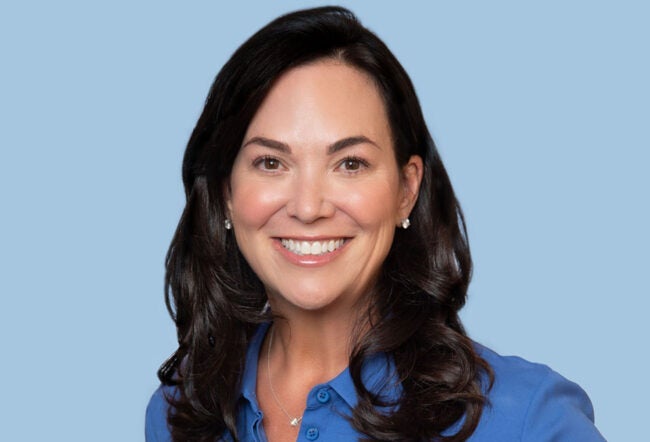Wharton management professor Michael Useem joined heads of state, politicians, CEOs, celebrities and others at this year’s World Economic Forum in Davos, Switzerland, where, he says, the mood seemed to be one of muted optimism. But, as he points out, there was also a recognition of how much still needs to be done to prevent the kinds of catastrophes — both natural and created — that changed the lives of so many individuals over the past two years. Useem, director of Wharton’s Center for Leadership and Change Management, offers this report on Davos.
Among the 2,500 business executives, political leaders and others who attended the 2011 meeting of the World Economic Forum in Davos, the mood was one of cautious recuperation from a self-induced, life-threatening illness. The financial crisis had been surmounted but not without lingering frailties, especially the under-employment of the West.
The ongoing political upheavals in Tunisia and Egypt added another crisis to the focus in Davos. The Forum arranged a special session on the unfolding actions in North Africa and the Middle East, and many participants sought frequent updates on the historic events, wondering whether the street protests, in the words of the special session, were a “tipping point or tsunami,” and whether they would result in a “soft landing or a bloody one.”
Still, cautious optimism prevailed among the national and corporate leaders in Davos that they had taken the right steps for at least the financial recovery. Not all their actions had worked, but on balance they had, and many of these leaders promised now to better prepare their agencies or enterprises to manage future threats in a world that has become ever more subject to low-probability but high-consequence events.
The Haitian earthquake and BP oil spill in the Gulf of Mexico served as recent reminders that enormous catastrophes were not only financial — and that much remained to be done for managing extreme risks in a world more vulnerable than ever to both natural and unnatural calamities. The agenda going forward: continue to monitor financial institutions and sovereign debt to prevent systemic collapse, build a learning network, redesign the board and rewire the mind.
Continuing Vigilance
Several of the more than 35 national leaders in Davos vowed to use their state powers to avoid any financial relapse. If governments had learned anything from the near death experience of the crisis, it was to more effectively oversee risk takers and their short-term, self-interested decisions.
“We were standing on the brink of an abyss,” said French President Nicolas Sarkozy of the financial crisis, “and we had to act.” But new perils are now leading toward new brinks, he warned, including the teetering sovereign debt of several European nations and a questioning of the euro. In the wake of the banking crisis, governments must again act boldly to prevent further upheaval. “The euro is Europe,” he declared. “We will never let the euro be destroyed.”
German Chancellor Angela Merkel added her own defense of the currency, saying it is “the embodiment of Europe today. Should the euro fail, Europe will fail.” She also sought tougher oversight of the players that had brought on the financial meltdown to begin with: “I always said there would be a new deck of cards on the table after the crisis,” though governments have not yet managed to deal all the right cards. “Do we have the necessary mechanisms in place to ensure sustainable growth globally? We have laid down the groundwork,” she stated, “but we are not there yet.”
Similarly, U.S. Treasury Secretary Timothy Geithner warned that, despite six quarters of GDP growth in the U.S., national leaders still had work to do to “take catastrophic risks out of the market.” And U.K. Prime Minister David Cameron, observing that “given the traumas of recent years, the recovery was always going to be choppy,” argued that country officials had no choice but to continue to “modernize and adapt” their economies or otherwise “fall behind and fail.”
Other country leaders cited additional perils that required still more measures. Indonesian President Susilo Bambang Yudhoyono worried about emerging conflicts over food, fuel and water that threatened to elevate private “greed” over public “need.” Russian President Dmitry Medvedev warned of the continued “fragility of our condition,” brought home just days before by a devastating explosion in the Moscow airport. But he, too, cautioned that the economic recovery was not yet complete. Many “tend to speak of the end of the world financial crisis,” he stated, but “it is quite obvious that it is not all that simple.” While “the crisis has sobered up everyone, we have coped with only one part of the symptoms of the crisis, and so far we have not found a model for growth.”
Symptomatic of the heightened awareness of risk management, the Prime Minister of Japan, Naoto Kan, referenced the English utilitarian philosopher Jeremy Bentham’s principle of creating the “greatest happiness” for the “greatest number.” In an era in which the downsides of risk have become more severe, he said that the Japanese government under his leadership, by contrast, would stress policies that generate not the “greatest happiness” — but rather “a society with the least unhappiness” — for the greatest number.
Building a Learning Network
Given the global financial crisis and the devastating events in Haiti and the Gulf, it came as no surprise that the World Economic Forum, under the continuing leadership of founder Klaus Schwab, turned the spotlight at this year’s 41st annual meeting on both the principles and strategies of risk management. The Forum launched a new Risk Response Network (RRN), an initiative to identify leading global risks and to better equip public, private and non-profit leaders with shared means for preventing, anticipating or responding to the risks.
As part of the RRN initiative, an annual Global Risks report, already in its sixth year, will continue to rank global perils as one pillar of the new network (the Wharton Risk Management and Decision Processes Center collaborates in the annual report’s preparation). At the top of the report’s ranking this year were the two inter-related risks of economic disparities and failing governance. The report warned that the benefits of globalization have not been evenly shared, and when combined with unresponsive or ineffective regimes, “resurgent nationalism and populism” are a likely product. Evidently, it was just those factors in toxic combination that played a major role in stimulating the popular revolt against the long-serving but poorly governed regimes in Tunisia and Egypt.
Two other RRN initiatives announced in Davos were intended to furnish country, company and NGO leaders with better tools for appraising risks and responding to disasters. A new Leading Practices Exchange will provide them with guidance on how to manage and mitigate risks. And a Community of Risk Officers will establish a network for mutual learning and peer counseling among those at the forefront of risk management. The first risks to be tackled by the new network include currency volatility, cyber security and resource scarcity, with others to be added.
With this initiative, the World Economic Forum has created an on-going platform to give those engaged in risk management better access to detailed data, proven practices and experienced players.
By way of one example: A physician at the Davos meeting who had been active in recovery from the Haitian earthquake reported that in some areas, relief agencies provided fresh water to survivors free of charge, while in others a modest charge was imposed. The latter practice would help ration and allocate a still scarce resource, vital for recovery. But the physician found that cholera spread far more often through camps that charged for water than through camps that didn’t charge, evidently because even a small cost led survivors to use less water in personal hygiene and food preparation. While charging a nominal amount for potable water made good economic sense, the experience here called into question whether it made public health sense.
Redesigning the Board
The governing board is potentially one of the most pivotal places for the introduction of risk management practices in the view of those attending an annual-meeting session on “Redesigning the Board.” Chaired by Berkeley professor Laura D’Andrea Tyson, who serves on the boards of several publicly traded companies, the dialogue drew on the experience of Donald J. Gogel, CEO of Clayton, Dubilier & Rice; Richard Haythornthwaite, chair of MasterCard Worldwide; Kevin Kelly, CEO, Heidrick & Struggles; Davide Serra, managing partner of Algebris Investments, and Daniel Vasella, chair of Novartis.
Leaving aside the question of whether company boards contributed to the recent financial crisis, the boardroom could serve as a barricade against the next crisis — if properly redesigned. The board’s traditional focus has been on “compliance, control and compensation,” fulfilling the oversight function mandated by both government regulators and listing requirements. But that is no longer sufficient, suggested several panel members. Directors should also be engaged in “company strategy, talent development and risk management.” It is a matter of not only “feeding the beast” — providing investors with expected quarterly returns — but also “building the business” — advising executives on strategic direction and appropriate risk.
To that end, directors should bring not just oversight capabilities to the boardroom. They should also be ready to challenge management practices, exercise independent judgment and resist when executive actions pose excessive risk. It goes the other way, too, suggested one veteran board member: “The worst thing is when a management team does not speak out.” Directors, another participant pointed out, “want management to speak up with its concerns.” For both sides to speak up, however, smaller boards make better forums. “Seven to eight people can debate strategy,” noted one governance veteran, “the way a board of 15 cannot.”
If boards were once more ceremonial than substantive, more honorary than productive, that is a dying tradition in an era when directors are increasingly called — or demand — to serve as strategic advisors. Several directors reported that their boards regularly conduct 360-degree feedback surveys of one another, inviting company executives to appraise their individual performance as well. One board chair even interviews every board member, asking for their appraisals of the other directors, and he then circles back with feedback, commending each director for his or her contribution to the boardroom but also citing one area for the director’s “improvement.” Another director with extensive boardroom experience found that the one best question to ask of each director about the others is, “If you were the only shareholder of the company, would you want this person on the board?”
If well redesigned, company boards can thus help their companies in “a race to the top” — building long-term value and avoiding excessive short-term risks — rather than permitting a “race to the bottom” that had driven some companies into the cauldron of the crisis. In another session, JPMorgan Chase CEO James Dimon reported that his own board had played just such a role when the more recent European sovereign crises materialized. With billions of dollars of European exposure and short-term losses likely, his board had advised against pulling back. “Let’s be rational and careful,” he said the directors told him. “We’re in Europe for the long term, we serve a lot of European companies,” and staying invested despite the crisis was the right thing to do.
Rewiring the Mind
For individuals, there are few better opportunities for re-thinking risk management than those offered by studying one’s own setbacks as well as the experiences of others. The annual meeting was fortunate to have included panels on “The Merits of Failure” and “Exploring the Extremes;” a session with Chesley Sullenberger, the USAir pilot who safely landed his aircraft in the Hudson River after both engines failed; and an event with adventurer Alison Levine, who has reached the South Pole, North Pole, and Mt. Everest summit.
Working in extremely high stakes environments requires taking calculated risks, the antithesis of recklessness that had driven the sub-prime mortgage lending that sparked the financial crisis. And when critical decision points are reached — going for a dangerous summit, landing a stricken aircraft — a total focus on the task at hand and the ability to draw on a lifetime of experience are vital for surmounting the perils of the moment.
Cautionary Lessons for Managing Risk
Among the more unforgettable personal lessons from the World Economic Forum’s focus this year on managing risk in a more risky world: Will-power is essential, calculate the risks, and focus on the goal at hand however stressful the moment — whether restoring an economy, avoiding default, landing an aircraft or climbing a summit. And among the more enduring company and country lessons: Complacency will kill you, good governance is essential, and learn from others’ mistakes to avoid your own.
The annual meeting in Davos served to reinforce a host of such messages. Between meetings, its Risk Response Network, Leading Practices Exchange and Community of Risk Officers will continue the Forum’s efforts to provide better ways to anticipate, mitigate, and even prevent catastrophic risks from becoming the kinds of disasters that we have witnessed in the financial crisis, Haiti, the Gulf and beyond.



